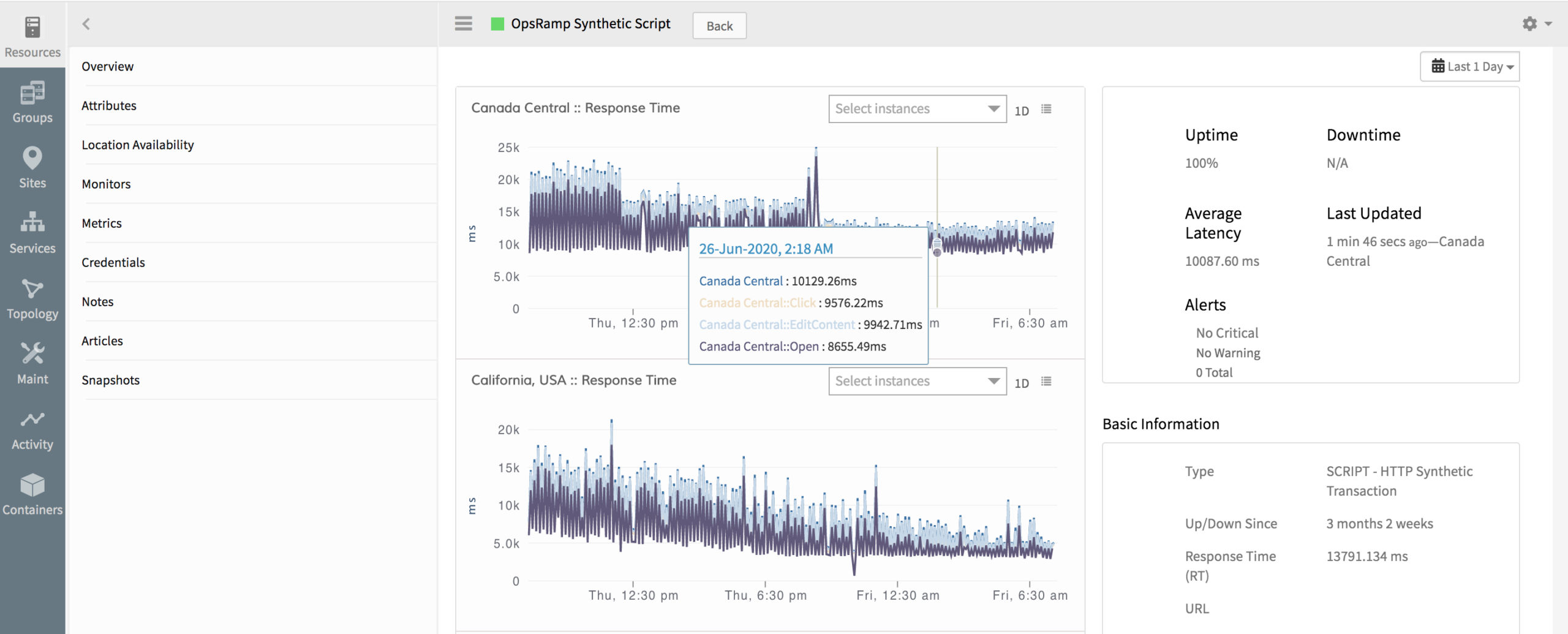OpsRamp has extended the capabilities of its namesake AIOps platform to include synthetic monitoring capabilities alongside existing tools for monitoring end user experiences.
Bhanu Singh, senior vice president of engineering and DevOps for OpsRamp, said the Summer 2020 Release of the software-as-a-service (SaaS) platform adds synthetic monitoring that not only identifies bottlenecks across multi-step transactions but also correlates transaction performance such as page responsiveness and page timeouts with business metrics such as conversion rates and completion rates.

By combining synthetic and end user monitoring capabilities, OpsRamp is effectively reducing the total cost of monitoring at a time when many organizations are under increased pressure to reduce costs, noted Singh.
The OpsRamp Summer 2020 Release also improves monitoring with transaction latency breakdown for each step that contributes to user experience issues.
It also adds visualizations for event correlations enabled by machine learning algorithms, support for HTTP response header logging for web performance insights and the ability to customizable transaction steps to provide more context.
The OpsRamp Summer 2020 Release also adds 22 monitoring integrations for Amazon Web Services (AWS), including AppStream, Cognito, EventBridge, GuardDuty, Lex, OpsWorks and SageMaker.
OpsRamp has added alert integrations with AppDynamics, Microsoft Systems Center Operations Manager, Sumo Logic and Sysdig. In addition, OpsRamp can now consume Sysdig events.
Finally, OpsRamp is making it possible to access alert sequencing explainers that describe how the machine learning algorithms work. Alert sequence policy status shows model training progress at each stage of the event management life cycle.
Singh said this latter capability is critical if IT teams are to gain confidence in AIOps platforms such as OpsRamp. In the wake of the downturn brought on by the COVID-19 pandemic, the need for AIOps has never been more pronounced. IT organizations are now under more pressure than ever to automate IT operations as part of a larger effort to reduce costs.
The challenge they face is IT environments have arguably never been more complex. In many IT environments, the level of complexity is no longer feasible to manage IT processes manually. Automating IT processes is challenging because in most cases the IT environments have been customized extensively. AIOps presents an opportunity to employ machine learning algorithms to learn how each application environment functions and then automate it based on best practices.
At this juncture, it’s more of a question of the degree to which IT organizations will be relying on AIOps. It may be a while before IT teams gain confidence in AIOps tools. However, with each passing day, machine learning algorithms become a little bit smarter. They may never have the intelligence of a human IT administrator; however, they never forget what they learn, require time off or quit to take another job.
On the downside, of course, is that should machine learning algorithms make a mistake, the potential damage to an IT environment could be significant given the level of scale machine learning algorithms operate on. As such, IT organizations will always be well-advised to make sure the appropriate level of human supervision is always available.



